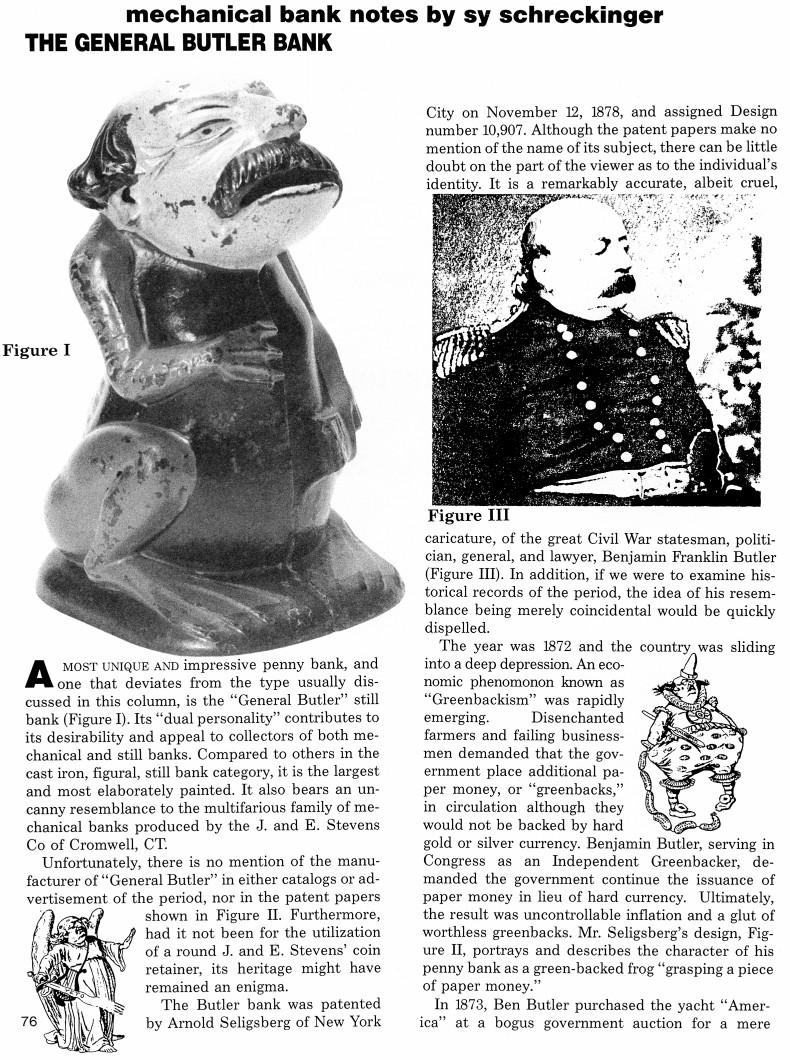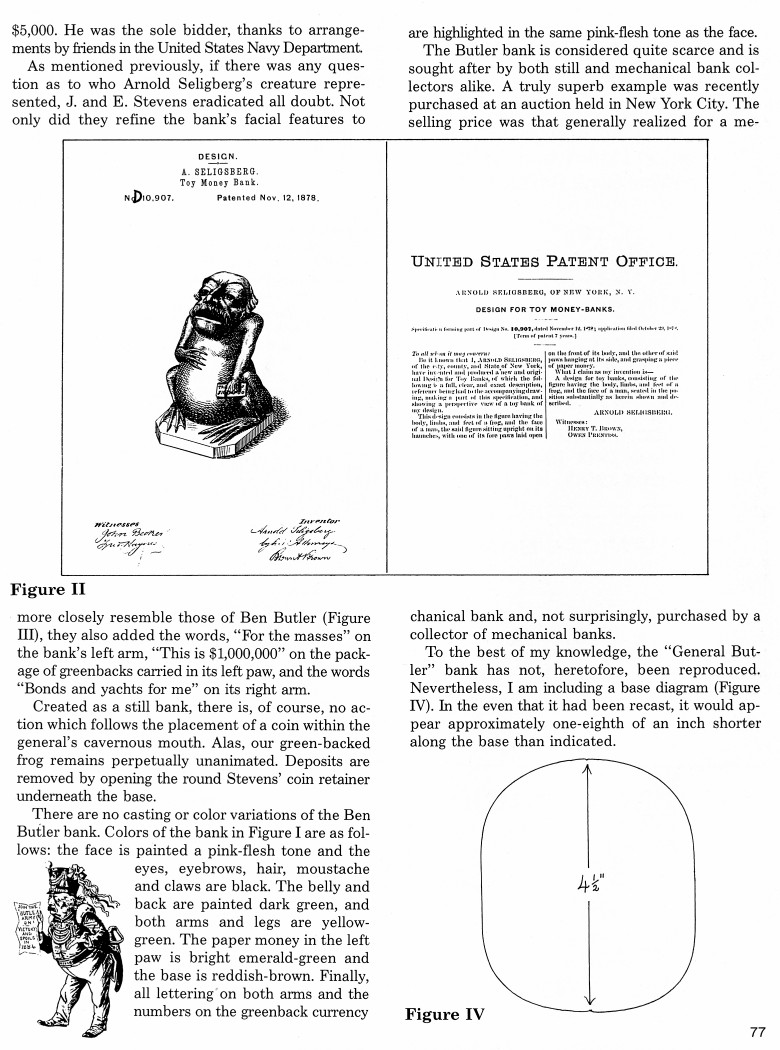|
The General Butler Bank
by Sy Schreckinger – ANTIQUE TOY WORLD Magazine – July, 1992
A most unique and impressive penny bank, and
one that deviates from the type usually discussed in this column, is the
"General Butler" still bank (Figure I). Its "dual personality" contributes
to its desirability and appeal to collectors of both mechanical and still
banks. Compared to others in the cast iron, figural, still bank category,
it is the largest and most elaborately painted. It also bears an uncanny
resemblance to the multifarious family of mechanical banks produced by the
J. and E. Stevens Co of Cromwell, CT.
Unfortunately, there is no mention of the manufacturer of "General
Butler" in either catalogs or advertisement of the period, nor in the
patent papers shown in Figure II. Furthermore, had it not been for the
utilization of a round J. and E. Stevens' coin retainer, its heritage
might have remained an enigma.
The Butler bank was patented by Arnold Seligsberg of New York City on
November 12, 1878, and assigned Design number
10,907. Although the patent
papers make no mention of the name of its subject, there can be little
doubt on the part of the viewer as to the individual's identity. It is a
remarkably accurate, albeit cruel, caricature, of the great Civil War
statesman, politician, general, and lawyer, Benjamin Franklin Butler
(Figure III). In addition, if we were to examine historical records of the
period, the idea of his resemblance being merely coincidental would be
quickly dispelled.
The year was 1872 and the country was sliding into a deep depression.
An economic phenomenon known as "Greenbackism" was rapidly emerging.
Disenchanted farmers and failing businessmen demanded that the government
place additional paper money, or "greenbacks," in circulation although
they would not be backed by hard gold or silver currency. Benjamin Butler,
serving in Congress as an Independent Greenbacker, demanded the
government continue the issuance of paper money in lieu of hard currency.
Ultimately, the result was uncontrollable inflation and a glut of
worthless greenbacks. Mr. Seligsberg's design, Figure II, portrays and
describes the character of his penny bank as a green-backed frog "grasping
a piece of paper money."
In 1873, Ben Butler purchased the yacht "America" at a bogus
government auction for a mere $5,000. He was the sole bidder, thanks to
arrangements by friends in the United States Navy Department.
As mentioned previously, if there was any question as to who Arnold Seligberg's creature represented, J. and E. Stevens eradicated all doubt.
Not only did they refine the bank's facial features to more closely
resemble those of Ben Butler (Figure III), they also added the words, "For
the masses" on the bank's left arm, "This is $1,000,000" on the package of
greenbacks carried in its left paw, and the words "Bonds and yachts for
me" on its right arm.
Created as a still bank, there is, of course, no action which follows
the placement of a coin within the general's cavernous mouth. Alas, our
green-backed frog remains perpetually unanimated. Deposits are removed by
opening the round Stevens' coin retainer underneath the base.
There are no casting or color variations of the Ben Butler bank.
Colors of the bank in Figure I are as follows: the face is painted a
pink-flesh tone and the eyes, eyebrows, hair, moustache and claws are
black. The belly and back are painted dark green, and both arms and legs
are yellow‑green. The paper money in the left paw is bright emerald-green
and the base is reddish-brown. Finally, all lettering on both arms and the
numbers on the greenback currency are highlighted in the same pink-flesh
tone as the face.
The Butler bank is considered quite scarce and is sought after by
both still and mechanical bank collectors alike. A truly superb example
was recently purchased at an auction held in New York City. The selling
price was that generally realized for a mechanical bank and, not
surprisingly, purchased by a collector of mechanical banks.
To the best of my knowledge, the "General Butler" bank has not,
heretofore, been reproduced. Nevertheless, I am including a base diagram
(Figure IV). In the even that it had been recast, it would appear
approximately one-eighth of an inch shorter along the base than indicated.
|


